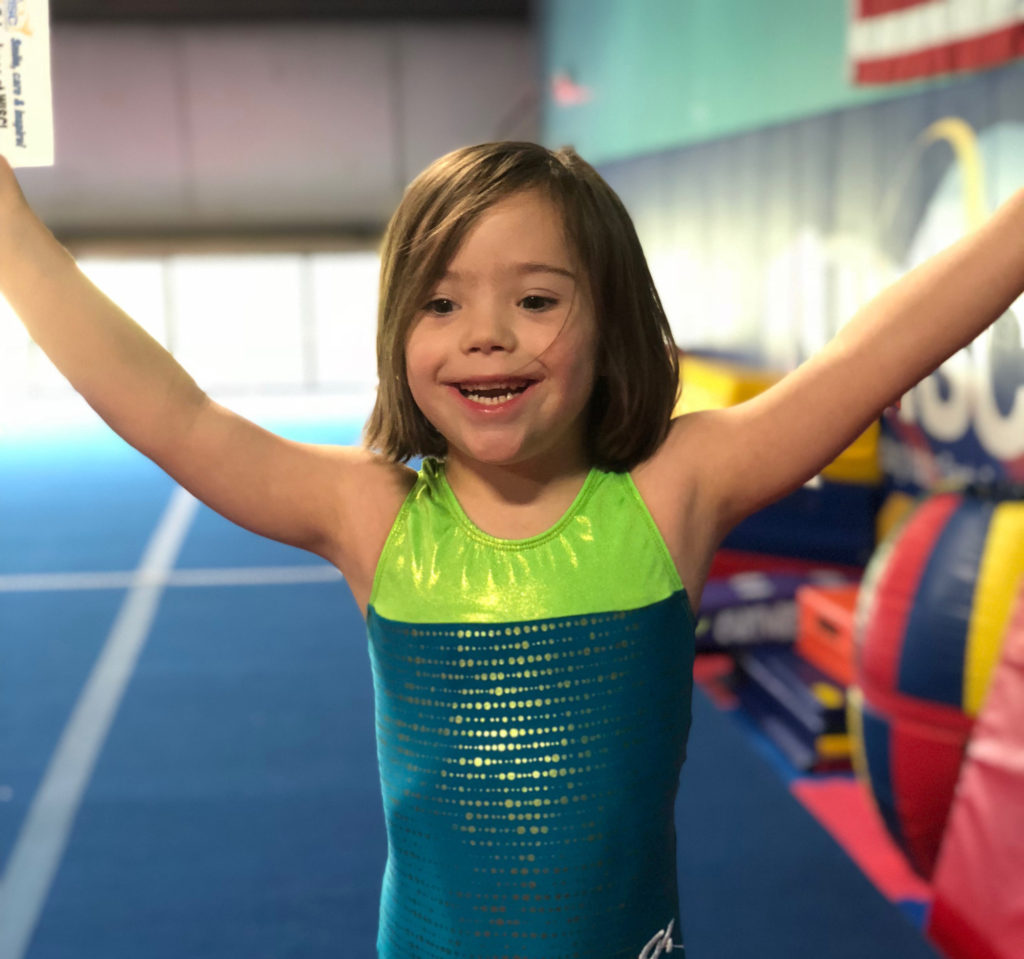David and Britta Marmon have a warm and gregarious manner and an almost contagious optimism that seemingly nothing can shake. But the Williamsburg, Va., couple remembers a moment in their lives that truly rattled them.
They were in a hospital labor and delivery room soon after the 2013 birth of their first child, a little girl. They had just received completely unexpected news — Maddox had Down syndrome, a genetic chromosome disorder causing developmental and intellectual delays.
“How are we going to do this?” they asked each other in sudden panic. “We had a child with Down syndrome, and we had no idea what that meant,” Britta remembers. The new parents wanted to celebrate their child’s birth but, at least at first, were at a complete loss for what to think and what to do next.
What moved the Marmons forward? Their introduction to Child Development Resources (CDR), a Williamsburg-area organization now celebrating 54 years of assisting parents and their young children with just that sort of quandary.
Early Childhood Intervention
Founded by a group of parents who were told their children were not “school-ready,” CDR began when those parents started their own school with just five children. Over the years, the agency has built a reputation for early childhood intervention, working to help children from birth to age 3 reach their full potential by teaching them, along with their parents and caregivers, the skills to make that possible.
Now serving about 1,200 children, CDR provides a variety of services that, in the words of Executive Director Paul Scott, include “anything a child would need for their family to be skilled to foster their development.”
A child is eligible for services if he or she has been diagnosed with a developmental delay or disability, or if he or she is developing normally but living in any difficult situation that might put them at risk for school failure, such as living in poverty or with an incarcerated parent, one who has mental health issues or who is very young.
A unique distinction of CDR is its family-centered services, Scott says. Therapists in various specialties work with the entire family, starting by setting goals with parents. “Parents are the experts on their child,” he says. “We partner with them and figure out how to accomplish what they want to do.”
And, just as important, parents and their child receive services both at CDR and in their own home, which helps them overcome any transportation difficulties. Plus, they’re able to work in a familiar, comfortable atmosphere where therapists can learn about any challenges that exist in the home setting.
Most of CDR’s services are free and funded by grants, and Scott emphasizes, “We have never denied a family services for an inability to pay.” He also stresses that the Williamsburg community has generously supported CDR’s work for decades.
CDR also provides special programs to assist new fathers and, most recently, added programs to aid new mothers, including breastfeeding and post-partum support and infant massage classes.
Also under the CDR umbrella is training for professionals in early-childhood education across Virginia. Significantly, CDR recently began providing training on infant and toddler mental-health issues. “The majority of emotional health issues start in early childhood, and they take an immense amount of effort to correct later in life,” Scott says.
A Lifelong Bond Formed with “Team Maddox”
The Marmons’ pediatrician put them in touch with CDR early on, and when Maddox was just 4 weeks old, she and her parents began receiving services.
Two of the main therapists who worked with the Marmons during their three years with CDR were Robin Rice, an occupational therapist, and Kara Trahant, a speech language therapist. Therapies dealt with fine motor skills, such as taking a bottle and feeding, and gross motor skills such as turning over when lying down. As Maddox grew older, Trahant introduced speech therapy.
In addition to the Marmons’ roles as parents to now-6-year-old Maddox and her 3-year-old brother Bo, they are strength and conditioning coaches at Marmon Muscle, a program they founded and run at the Williamsburg Indoor Sports Complex (WISC). Britta also works as a women’s soccer assistant coach at the College of William and Mary.
The Marmons’ abundant energy and “can-do” spirit, which they no doubt apply to their day jobs, have clearly helped them rise to the occasion of managing their daughter’s challenging diagnosis. Britta remembers: “Every time a therapist came over, they were doing things that were hard … but we would celebrate everything, all the little things — when she learned to turn from front to back, learned to crawl, learned to use a straw. … We could see her first crying and refusing, but then in coming weeks, learning to do it.”
About the Marmons’ consistent positivity, Rice declares, “Maddox got the right parents!” Trahant agrees, saying they never focused on her limitations. Britta, however, resists taking credit, instead expressing profound gratitude for the CDR therapists’ efforts. “They were genuinely invested in the work and wanted to really be a part of this little girl’s life.”
Every time the therapists came over, David says, it felt like a reunion, and they have continued to stay in touch since Maddox started school. “We’ve got a lifelong bond that we’ve formed with this team — Team Maddox,” he says.
CDR also connected the Marmons with a network of other families whose children have special needs, which has provided invaluable support and interaction for them and their daughter.
Though some children with Down syndrome require a smaller, special education classroom, Maddox is mainstreamed at Matoaka Elementary, where she is in first grade. Around others, she does not always correctly understand or answer questions, but she is talkative and full of energy and enthusiasm. Maddox’s parents have focused on developing her communication skills, and she exudes a cheerful charm. And while some children with Down syndrome have low muscle tone and even require a wheelchair, Maddox’s early exposure to gross motor exercises enables her to walk well. She’s already tried her hand at gymnastics, soccer and her two favorite sports, dance and tee-ball.
Since Maddox entered kindergarten last year, her parents can see more clearly the challenges that lie ahead — and the differences between her and other children her age. But her parents say CDR has helped them learn how to be her best advocates.
CDR is “an amazing resource in our community,” says David, adding that he’s learned just how many opportunities exist today for those with Down syndrome. For families with a special needs child, he says, CDR “can be a game-changer for your child and your family.”


